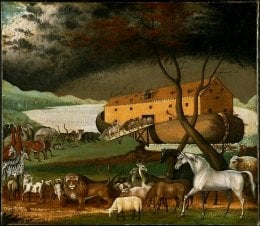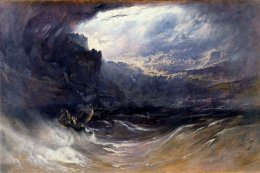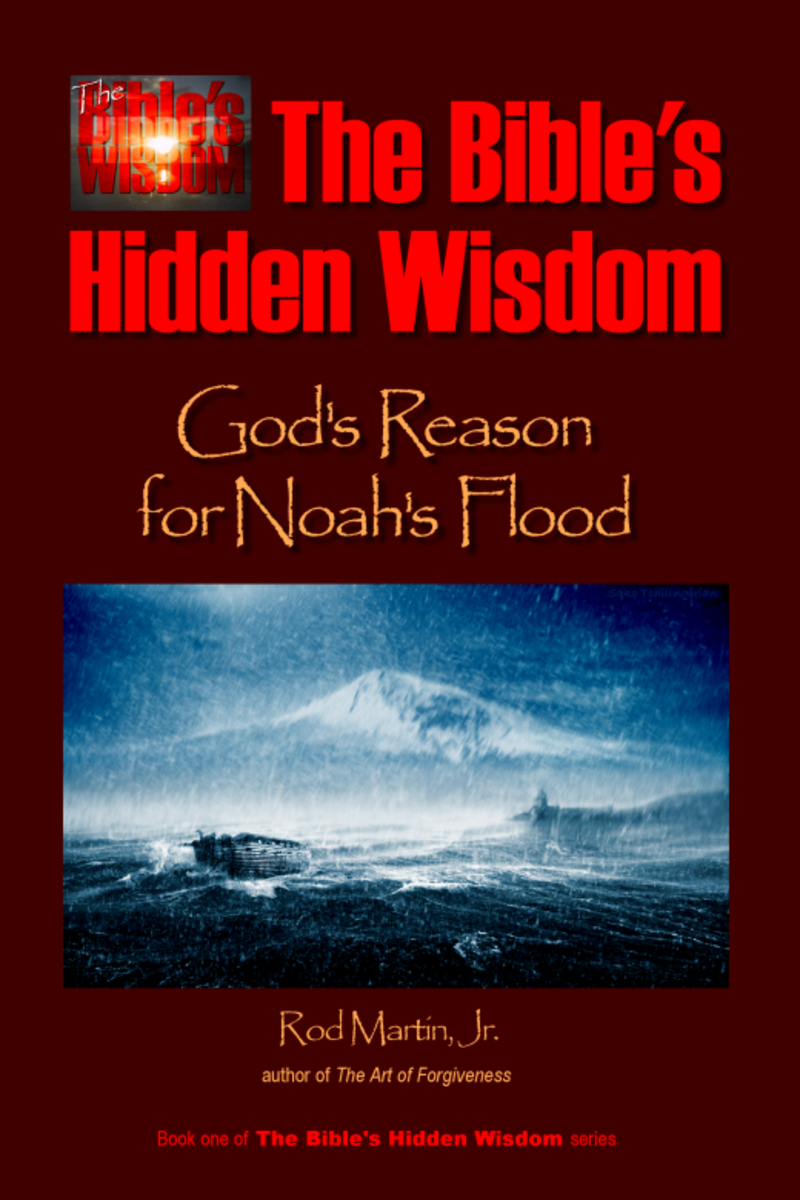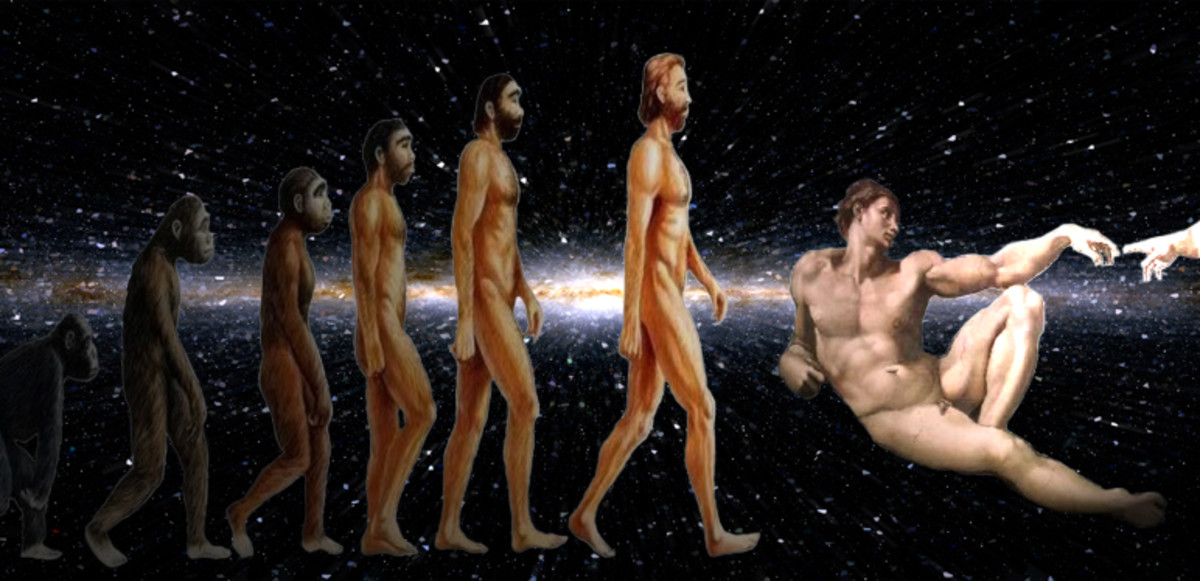Genesis Bible Commentary: A Problem with Noah’s Flood
===========================
Note:
This is part 5 of a series of 6 articles on the Bible's book of Genesis.
Click here for the series overview.
===========================
by Rod Martin, Jr.
(I recommend you read the series of 6 articles in sequence for the greatest understanding.)
There are many scientific problems with the Flood. It's also possible that the Flood is symbolic representing something for which we have no vocabulary. A great many unknowns reside behind this story. We won't look at the more mundane aspects, here. That has been well covered elsewhere. But we will look at the internal logic of the Bible. There we find clues which are both profound and interesting.

I had found what appeared to be the Kabbalah's "Tree of Life" embedded in Genesis chapters 4 and 5, right after the chapter 3 ending words, "tree of life." I had discovered several apparent links between Genesis 4 and 5:
- Similar or equivalent names in nearly the same sequence and a specific reason that the sequence was not the same.
- The ability to pour the names from Genesis chapter 4 into the female path and from chapter 5 into the male path of the Sefirotic "Tree." Both were snug fits, except for the exclusion of Seth's Enoch, but this was explained in the chapter's text.
- The mark of "7" given to Cain and Cain's Lamech (7×11=77) combined with the unique inclusion of prime factors of "7" in the ages of only Cainan and Seth's Lamech.
All of these factors seemed to link the two halves of the Sefirotic whole. The timeline derived from this relationship still requires corroboration. Certainly, its agreement with Cayce's two dates proves to be interesting, but far from adequate.
Toward this corroboration, I investigated the new biblical timeline and its relation to those of science.
The only date which stood out was that of the consensus date for the end of the Neanderthal species—Homo neanderthalensis. The date was 28,000 BC and compared favorably with the 27,970 BC date for Noah's Flood.
Analysis of Genesis 6
Something caused God to become angry enough to destroy most all life on Earth. We will explore this idea shortly.
The participants in raising God's ire were the "daughters of men" and the "sons of God." The sons found the daughters to be hot and tied the knot. They had babies and these grew up to be men of renown; but the world became full of wickedness, violence and a corruption of the flesh.
There are many interpretations of these sons and daughters.
The sons of God have been called angels, but how could, and why would angels have sex with humans? According to Jesus in the New Testament, angels don't do this sort of thing. Other places in the Old Testament seem to support this impossibility—like the angel of God (satan) who stood in front of Balaam to block his way from offering prayers against Moses and his people. Balaam did not see the angel at first, but his donkey did!
How can such a non-physical, spiritual being procreate with female humans? Immaculate Conception? Perhaps. But to what purpose? If such resulted in an abomination which angered God, then it certainly would not have had His blessings. This is another reason why the idea of "angels from heaven having sex with humans" doesn't seem to work.
But then, perhaps "fallen angels" in Homo sapiens bodies had sex with the ladies.

Genesis 1:26–27 tells us that God created man in His image and likeness. Compare this to the wording in Genesis 5: "And Adam lived an hundred and thirty years, and begat a son in his own likeness, and after his image; and called his name Seth" (Genesis 5:3). The point of this comparison is that Adam, now a human, had a son which was also a human—both Homo sapiens with similar features. So, when God created man in Genesis 1, man was a non-physical, spiritual and immortal source of creation with similar features to those of the Father.
Genesis 2:7 describes a second creation of man, but this time from the dust of the ground. This is the physical man—made of chemicals (dust). Every lesson in the Bible about the "likeness" of God is that He is non-physical, thus the prohibition against graven images, because they would be a lie.
And every lesson in the Bible seems to be one that commands us to rely on this non-physical source rather than on physical instrumentalities. I had read about how Judah was being attacked by Israel, and instead of King Asa of Judah relying on God as he had with the million Ethiopians who had attacked earlier, he sought the help of Syria. For this, and the evil he wrought on the prophet who chastised him, he suffered a painful death (2 Chronicles 16).
Any group can proclaim itself to be exalted and chosen by supernatural powers. Either all of them are lying or all but one. I choose to believe the one, based on my own empirical experiences with creation and miracles, and upon the wisdom in the Bible that seems compatible with those experiences.
Thus, it seems that man, as we know him today, possesses a dual nature—that of fallen immortal spirit wrapped in Homo sapiens flesh.
These are the children of God—the "sons of God."
And if these are the sons, then the "daughters" must be something different. But if the "sons" are immortal spirit wrapped in Homo sapiens flesh, then the daughters must be either,
- Homo sapiens without immortal spirit,
- Non-Homo sapiens with immortal spirit, or
- Non-Homo sapiens without immortal spirit.

Elusive Reason for the Flood
No one that I've ever read fully addressed the "crime" for which humanity was being punished. Noah's Flood was supposedly a solution and God was apparently satisfied with the result, otherwise He would never have promised never again to use the Flood. So, what was the crime?
Genesis 6 is rather vague on this. It merely talks of wickedness, violence and a corruption of flesh.
Let's look at this analytically. If God would destroy most of the life on planet Earth for a wickedness, then it would seem that the wickedness which prompted such drastic action had been cured.
All of the wickedness which humans have perpetrated in the last several thousand years has not been bad enough to warrant another Flood. Indeed, God said that he would never again need the Flood. The cure had been that complete. But what did it cure?
Read the Book that Changes Everything

Genesis 6 also talks of violence, but hasn't humanity been violent? Look at the 70 million killed in World War II, alone! The Jewish Holocaust! The pogroms of Stalin the Butcher! The Killing Fields of Cambodia! The inhumanity of Darfur! None of these have prompted another Flood.
If we look only from the viewpoint of humanity, we may never discover what that crime was. We have to imagine what God would find important and what could have threatened that importance.
Next: God's Reason for the Flood
I had a biblical timeline which seemed to work, but needed some kind of corroboration that made sense. Certainly, much more was needed in the way of proof, but I wondered if Noah's Flood could give me a nod of agreement. See, God's Reason for the Flood.
© 2012 Rod Martin Jr






